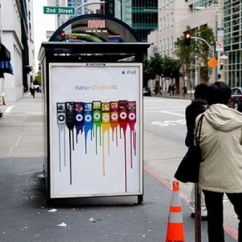Articles and News
Spending Your Ad Dollars: What Really Resonates With Affluent Consumers | July 10, 2013 (0 comments)

Merrick, NY—We know the statistics: most luxury jewelry storeowners are Baby Boomers, most bridal consumers are Millennials, and Millennials are wired to the teeth.
True—but let’s not generalize. Millennials have a better relationship with their Boomer parents than Boomers did with their Greatest Generation parents, but they still receive, process, and act upon marketing messages differently. But when it comes to high-income consumers, those differences are often smaller than you’d think, and the places where you’re going to catch affluent consumers’ interest best are also not where you’d think.
Hint: it’s really not where you’d think!
In its weekly Tuesday Tips & Tricks newsletter, Toledo, OH-based Fruchtman Marketing points out some key differences in marketing to Millennials vs. Boomers:
- Don’t make the mistake of marketing to Millennials solely online. They still watch TV, but it might be on Hulu or Netflix, not necessarily broadcast or cable.
- They still listen to music from a third-party source, but more likely through Pandora or Spotify than the radio.
- A TV commercial may take several viewings before it resonates with a Boomer—and spur them to action only if they’re in the market for that particular product. But if a Millennial is intrigued by the commercial, even on first viewing, they’ll grab a smartphone and check out the website on the spot. And if it’s interesting, they’ll share it and talk about it via social media, even if they’re not in the market for the product.
But here’s the twist: According to the Shullman Luxury and Affluence Monthly Pulse, the ads that resonate most with young affluent consumers (household income over $250,000) are in the most surprising places: the gym, the doctor’s office, in transit (bus stops and train stations), in movie theaters, in elevators, and on an airplane.
Social media? Not so much. The Shullman study found that ads that generated the greatest interest among young affluent consumers (under age 35) were transit ads—bus stops, subways, and train stations. Next, it was ads they saw in their health club or gym. (To clarify, that’s ads they saw while in the gym, not ads for the gym.)
89% of under-35 respondents to the Shullman survey said transit was the place where their interest was most piqued by advertising, and 85% listed the gym. For middle-age affluents, age 35-54, the gym percentage drops to 67%, and for older consumers, age 55+, the figure drops to 50%. But the transit percentages really plummet for older consumers—only 34% of affluent consumers age 35-54 said they were somewhat or very interested in ads they saw in transit, and for consumers over 55, that drops to 27%.
Bob Shullman, founder of The Shullman Research Center, cautions the high effectiveness ratings for gym and transit ads do represent quality over quantity—it doesn’t mean that 85% of affluent Millennials are bus-riding health nuts, but among those that do take public transit or go to a gym, they are interested in the ads they see there. But if your goal is simple exposure; i.e. to have as many affluent adults as possible see your ad, TV is still the way to go.
And, he pointed out, those respondents who say they’re planning a luxury purchase in the next 12 months tend to pay more attention to advertising.
Ironically, however, the younger set—the ones who are wired, remember—showed up in the study as far less interested in ads on social media than their older counterparts. Only 19% of consumers under age 35 said they were “somewhat or considerably interested” in ads they saw on Facebook and other social media sites, making it the third lowest performing ad category for this age group. But the social media figure jumped to 52% among affluents age 35-54, and while it fell back to 32% for the oldest consumers surveyed, it still remained far above the figures for the youngest.
“Millennials are just a totally different animal,” Shullman told The Centurion.

Chart courtesy of Shullman Research Center.
Digital channels are reaching a greater proportion of luxury prospects, but for the more upscale audience (those with household incomes over $250,000 and over $500,000), traditional print channels remain strong, while social media's and websites' reach declines. Among all consumers—both affluent and non—TV still ranked number-one for reach, but among the most affluent, newspapers remained more effective.
The youngest affluent consumers in the study don’t find direct mail ads very interesting; at 17%, that category ranked last. But they are far more likely to be interested in an ad they see in an elevator than their older counterparts. That category resonated with 75% of younger affluents, but only 26% of those age 35-54, and 15% of those over 55.
Fruchtman Marketing also did a quick survey of the Millennial-age employees in its own agency. Some findings:
Some favorite TV shows among Millennials: Pretty Little Liars, Big Bang Theory, How I Met Your Mother.
When asked if they didn’t work at an ad agency serving the luxury fine jewelry industry, would they feel nervous about walking into a jewelry store, five of the seven Millennial-age employees at the agency said yes, they would. Only two said they wouldn’t.
What would make them more comfortable? Number-one response was “Less staff ‘hovering,’ ‘bothering,’ or ‘stalking.’ Also, a store feeling “more casual” or “less intimidating.” Read more of what Fruchtman’s Millennial staffers said here and here.
Top image: Visionwidget.com







